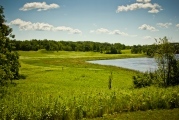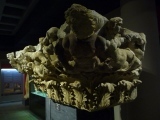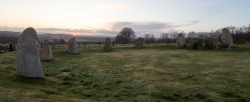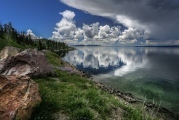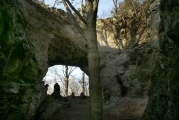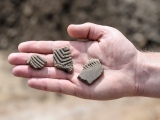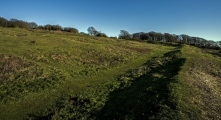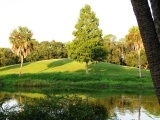Andy Burnham's Blog, page 245
December 24, 2018
Manitou Mounds
Largest group of burial mounds and associated village sites in Canada. The archaeological record dates back 8000 years, with 15 burial mounds dating to what is termed the Laurel culture (300 BC to 1100 AD). The mounds vary in size with the largest being 7 meters tall.
Published on December 24, 2018 12:07
Aydin Archaeological Museum
Explore ancient Turkey on the Megalithic Portal. Aydın Archaeological Museum is in Aydın, western Turkey. Established in 1959, it contains numerous statues, tombs, columns and stone carvings from the Hellenistic, Roman, Byzantine, Seljuk and Ottoman periods, unearthed in ancient cities such as Alinda, Alabanda, Amyzon, Harpasa, Magnesia on the Maeander, Mastaura, Myus, Nisa, Orthosia, Piginda, Pygela and Tralleis. The museum also has a section devoted to ancient coin finds.
Published on December 24, 2018 10:20
December 22, 2018
Easter Aquhorthies
The Winter Solstice sunrise at 0852am yesterday (21st), captured by Umbra-Man. More winter solstice photos please - send them in from any of our site pages - and we'll show the best ones here. Have a very Happy Christmas, Yule etc from all of us at the Megalithic Portal. A lovely recumbent stone circle, situated on the false crest of a hill just outside Inverurie in Aberdeenshire. One of the stones is made of stunning red jasper and there is a 'reserved' area in front of the recumbent, delineated by two huge slabs which stick out from it, pointing towards the centre of the circle.
Published on December 22, 2018 13:18
Yellowstone Lake
US National Park shutdown - many parks such as Yellowstone will remain open but without staff, however amenities and many attractions are shut. More details on our page below. Browse our resources on other National Parks and Monuments here.. Thousands of years before Euro-Americans discovered the bubbling mudpots and eruptive geysers of what is now Yellowstone National Park, early Americans were spending part of their summer camping in the Yellowstone Lake area. Its always been a destination resort, said Elaine Hale, park archaeologist. For at least 10,000 years people have been using the lake area.
Published on December 22, 2018 12:51
Aksamitova Brana
A cave of geothermal origin in limestone, now known as Aksamit Gate. Recent thinking is that the cave had no ceiling and was open from very early times. There is evidence of ancient human activity in the highest part of the cave, which is lit by the winter solstice sun rays at midday (see photos lower down). The site is located on the top of the mysterious karst massif called the Golden Horse (Zlatý kůň), sited very close to the prehistoric hillfort of Kotýz. Is said that the strange name Kotýz comes from the name of the thracian goddess Kotys, whose cult was brought to this land in the Iron Age.
Published on December 22, 2018 12:32
Mozia
Mozia, today known as San Pantaleo is an island of the Lagoon of Marsala. It was an ancient Phoenician city. The island faces the west coast of Sicily, between l, Grande Island and the mainland
Published on December 22, 2018 12:11
Sudbeckenpfad
During the construction work of new houses, the remains of a Neolithic settlement were found near Sudbeckenpfad road in Bochum (North Rhine-Westphalia/Germany). The settlement was built by the Rössen culture and dates from ca. 4500 BC.
Published on December 22, 2018 11:58
December 21, 2018
Cissbury Ring
Hillfort and Neolithic flint mines in West Sussex The largest hill fort in Sussex, the second largest in England and one of the largest in Britain and Europe overall, covering some 60 acres. The earthworks that form the fortifications were built around the beginning of the Middle Iron-Age possibly around 250 BC but abandoned in the period 50 BC - 50 AD. Of the approximately thirteen flint mining shafts excavated at Cissbury between 1875 and 1878, three shafts exhibited art and marked chalk blocks:
Published on December 21, 2018 12:23
Irkutsk Museum Of Regional Studies
Irkutsk's Museum of Regional Studies is located at 13, Karla Marksa street, Irkutsk, Russia and contains a wide selection of exhibits from prehistoric times to the modern era.
Published on December 21, 2018 12:19
December 19, 2018
A look at the best Prehistoric Sites to visit on a trip to Florida
The area of Florida around Orlando is well known as a vacation destination, with many well known theme parks and tourist destinations. But these can get incredibly busy, so to get away from the crowds and commercialisation, why not spend some time exploring Floridas prehistoric heritage. Here is our guide to some of the best sites to visit, many of them known only to the locals.
Published on December 19, 2018 12:49

